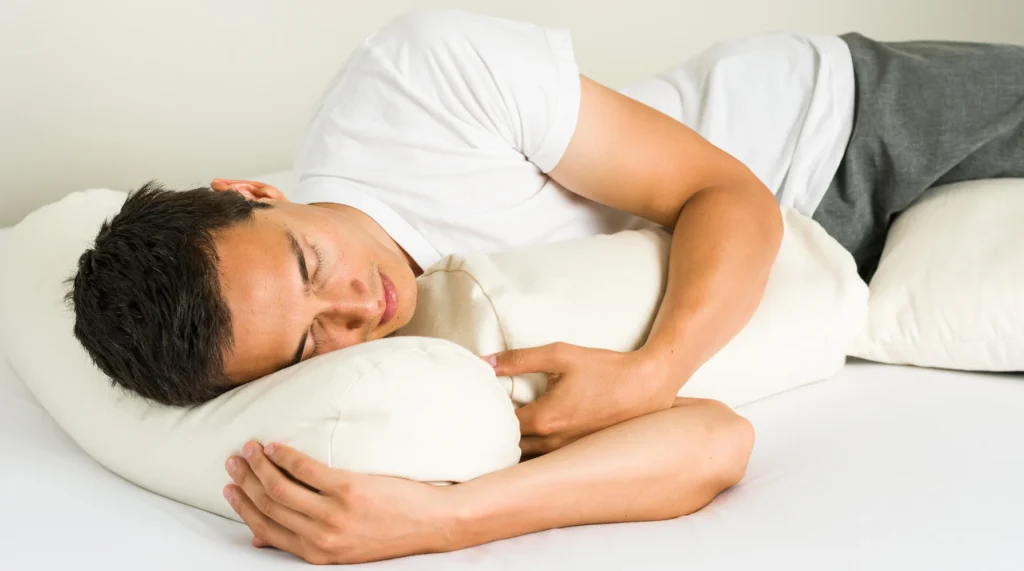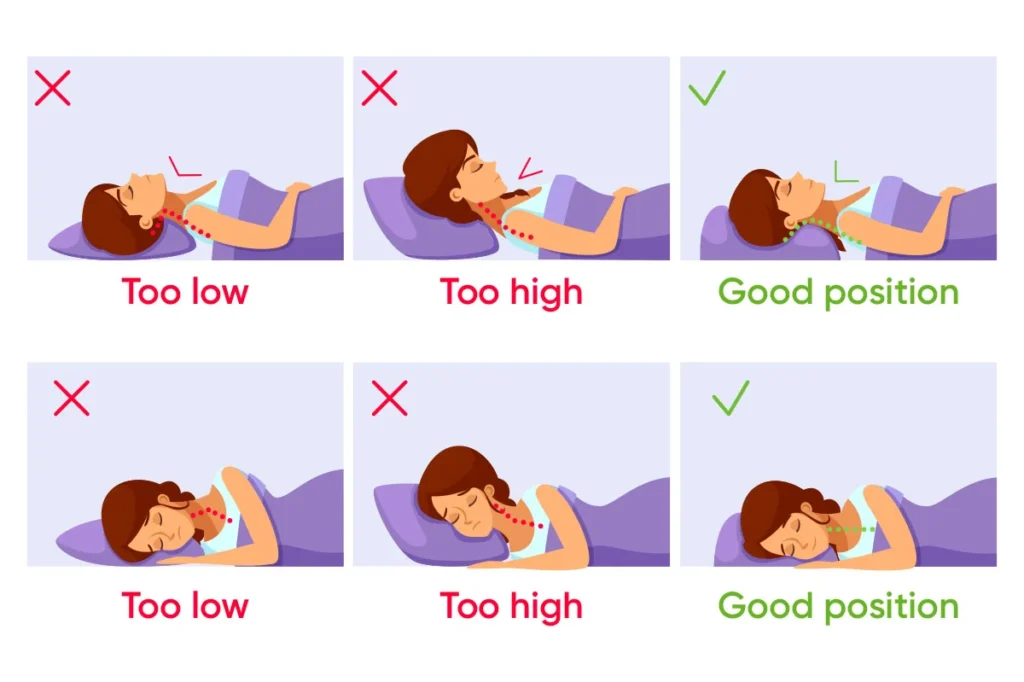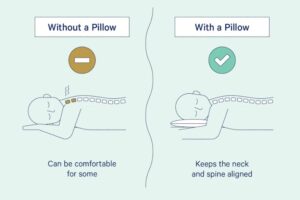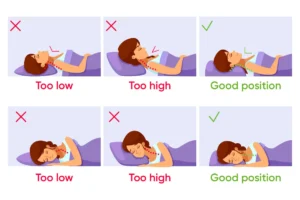The ideal pillow height is 4 to 7 inches for adults. For different sleeping positions, the ideal pillow height may vary.
The ideal pillow height for back sleepers is 4-6 inches. What is the ideal pillow height for other sleeping positions? Stay connected as we are going to answer all of the questions in this blog about the ideal height for pillows.
Mattress firmness and sleep hygiene get plenty of attention, but pillow height—or “loft”—can make or break your comfort.
If you wake up with shoulder or neck pain, your pillow is to blame. If you need help with choosing the best pillows, the PforPillow Blog section is full of useful resources.
Why You Need to Focus on the Ideal Height of a Pillow
Pillow height affects the alignment of your head, neck, and spine. A pillow that’s too high or too low can lead to:
- Neck strain
- Tension headaches
- Shoulder pain
- Poor sleep quality
The goal is to maintain neutral spine alignment, where your head is in line with your spine, and your neck muscles are not under stress.
Ideal Pillow Height by Sleeping Position
Are you a back sleeper and want to know the ideal pillow height for back sleepers? Well, we try to make our sleep guides as detailed as possible for all types of sleeping positions.
| Sleeping Position | Ideal Pillow Height | Recommended Loft Type | Key Features to Look For |
|---|---|---|---|
| Side Sleeper | 4–6 inches | High Loft | Firm support fills the gap between the head and the shoulder |
| Back Sleeper | 3–5 inches | Medium Loft | Supports neck curve without tilting head forward |
| Stomach Sleeper | 2 inches or less | Low Loft | Firm support fills the gap between the head and the shoulder |
Here is the detailed information about ideal heights for every sleeping position.
1. Side Sleepers
Ideal Height: 4 to 6 inches (medium to high loft)

Side sleeping is the most common position and generally the healthiest for spinal alignment, but it creates a wide gap between the head and the mattress. That gap must be filled to keep the neck straight and supported.
What to Look For:
- A firmer, high-loft pillow that holds its shape
- A height that keeps your nose aligned with the centre of your body
- Materials like memory foam, latex, or shredded foam for optimal contouring
Tip: If you have broad shoulders, you may need a higher pillow than someone with a narrower frame.
2. Back Sleepers
Ideal Height: 3 to 5 inches (medium loft)

Back sleepers require a balance between support and softness. The best pillow for back sleepers should support the natural curve of your neck without tilting the head forward.
What to Look For:
- A medium-loft pillow that cradles the neck
- A slightly curved or contoured pillow can help maintain cervical support
- Avoid overly high or firm pillows that push the head forward
Tip: Some back sleepers benefit from pillows with a neck roll to better support the cervical spine.
3. Stomach Sleepers
Ideal Height: 2 inches or less (low loft)

Stomach sleeping is generally discouraged due to the neck twist required, but if it’s your preferred position, pillow height becomes even more critical.
What to Look For:
- A very thin or even no pillow at all
- A soft, low-loft pillow that reduces neck strain
- Some stomach sleepers prefer placing a small pillow under their chest or pelvis instead to reduce lower back pressure
Tip: Using a body pillow can help stomach sleepers transition to a healthier side-sleeping position over time.
Other Factors That Influence Ideal Pillow Height
The height of the pillow is an important factor to consider, and there are many other factors that determine the ideal pillow height for sleepers.
1. Shoulder Width
Broader shoulders increase the gap between the head and mattress when sleeping on your side, requiring a higher pillow for proper support.
2. Mattress Firmness
- Softer mattresses allow the body to sink deeper, so the distance between the head and mattress is reduced. This may require a lower pillow height.
- Firmer mattresses keep the body on top of the surface, so a higher pillow is usually needed to bridge the gap.
3. Pillow Fill Material
- Memory foam retains shape and offers support but can feel firmer.
- Down and feather pillows compress under weight and offer softness but may not maintain consistent loft.
- Adjustable fill pillows let you add or remove stuffing to suit your needs.
Signs You’re Using the Wrong Pillow Height
The wrong pillow will make every night an unbearable journey. Every morning, you will wake up with sore neck or shoulder muscles. Here are some clear signs that you are using the wrong pillow height:
- You wake up with neck stiffness or shoulder pain
- You toss and turn often during the night
- You feel numbness or tingling in your arms
- You snore more (especially as a back sleeper)

How to Measure Pillow Height at Home
Place your pillow on a flat surface and measure from the bottom seam to the top seam (without compressing the pillow). Compare the height to your sleep position needs:
| Sleep Position | Ideal Pillow Height |
| Side Sleeper | 4–6 inches (high loft) |
| Back Sleeper | 3–5 inches (medium loft) |
| Stomach Sleeper | 2 inches or less (low loft) |
Conclusion: Find Your Perfect Pillow Height
The right pillow height can mean the difference between restful sleep and chronic discomfort. Whether you’re a side sleeper who needs elevated support, a back sleeper seeking gentle contouring, or a stomach sleeper requiring minimal loft, tailoring your pillow height to your sleep style is key.
If you’re unsure where to start, consider investing in an adjustable pillow—one that allows you to remove or add fill until it feels just right. Ultimately, the best pillow is one that supports your neck in a natural, neutral position and helps you wake up feeling refreshed.
Bonus Tip: Don’t forget that pillows wear out over time. Replace your pillow every 1–2 years or when it no longer offers the same support it once did. Let your pillow do its job—so your body doesn’t have to.






